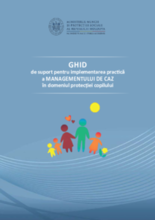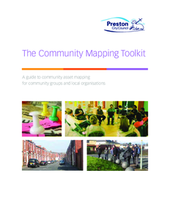The aim of this stage is to monitor children and young people post reintegration/placement/transition and ensure their ongoing safety and wellbeing. Throughout this stage, case plans continue to be implemented, including the provision of support as required. Local laws and policies may stipulate the requirements and powers around monitoring, and this may differ based on the placement type.
Monitoring enables you to evaluate the effectiveness of case plans and support plans and adapt them overtime based on the evolving needs of children, young people and families. It allows you to identify and respond to issues in a timely manner and offer early intervention. This minimizes the likelihood of risks escalating and of placement breakdown or serious issues occurring. Monitoring also allows you to determine when case closure is appropriate.
As well as case level monitoring, monitoring and evaluation should also be conducted of the overall reintegration program, including of interagency coordination where it occurs as a part of.
This stage is concerned with follow up of children/youth post reintegration/transition and the monitoring and adaption of case plans/support plans. Many of the actions involved in this step will be specific to children, young peoples’ and families’ situations, type of placement and the nature of support plans in place. Activities might include:
- In-person monitoring visits and follow up assessments conducted by social workers
- Developing partnerships with other organizations or actors who may be involved in monitoring activities, including to determine procedures, standards and identify resources required
- Monitoring visits conducted by partners or community leaders/ local authorities/ community volunteers
- Remote follow up, including via phone calls
- As a part of implementing case plans, garnering feedback from children/ young people on their experiences and support provided, and making adjustments to care/case plans as appropriate
- Continue to work with families and communities to address any remaining stigma
- Checking in with local schools/education providers and other community-based service providers regarding children/young people’s progress as a part of monitoring
- Responding to safety plans if and when they are activated
- Evaluating case/support plans and making adaptations to support services as per need
- Ongoing periodic family conferencing meetings
- Arrange or increase respite provisions, if follow up assessments deem it necessary to prevent placement breakdown
- In the event placements deteriorate and result in significant risk of harm, abuse, alternative care, including emergency care may need to be arranged whilst assessment and permanency planning is recommenced.
- Enacting case closure when the goals explicitly set in the case planning phase have been met and it is deemed appropriate, taking into account conformity with local laws
- Transferring oversight responsibility to local child protection/family welfare services and authorities
- Participatory evaluation sessions held with children, young people and families
- Evaluations of referral mechanisms and any interagency collaboration that has occurred in support of the reintegration and placement of children
Key milestones associated with this stage are:
- Placements are stable and children and families are able to access adequate support in the community
- Young people who transitioned out of care into independent living are well adjusted and able to access community-based services.
- Root causes and impacts of separation on children and families are addressed/overcome
- Children and young people are integrated into their local communities and functioning well
- Goals determined in the child and family support planning phase are met and cases closed
Resources
Displaying 1 - 3 of 3
Ghidul de suport pentru implementarea practică a Managementului de caz în domeniul protecției copilului este destinat angajaților structurilor teritoriale de asistență socială.
The story of Heartline’s transition from residential care to family care is told in this recently released Faith to Action case study. The case study details their experience through three stages of transition—learning, preparation and planning, and full transition—with transparency. It addresses common challenges for transitioning organizations, as well as the strategies Heartline took to overcome them.
This toolkit explains the process behind asset mapping, looks at how to carry out a Community Street Audit, provides advice on making asset mapping meaningful and ensuring it leads to constructive action, and on involving different sections of the community - including community residents, elected councillors and representatives from local services. Finally it looks at the tools you may need, and how to keep community and local agencies informed of any action plans arising from the asset mapping.



